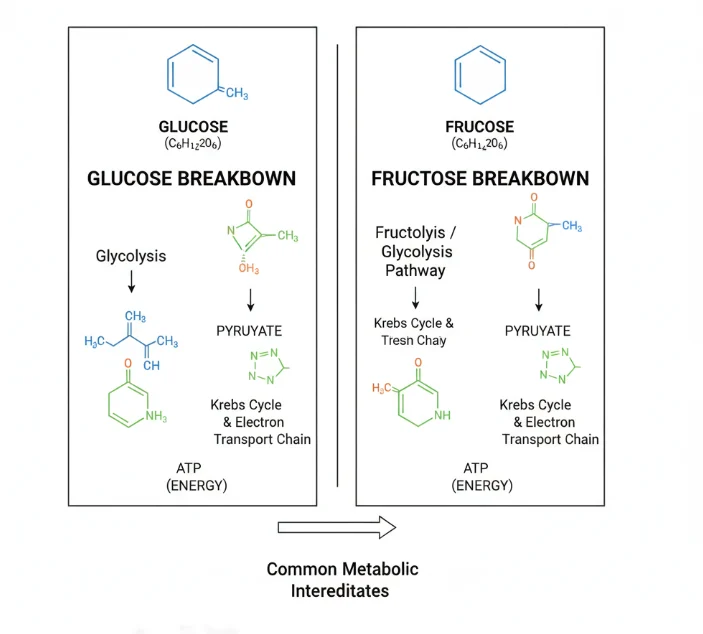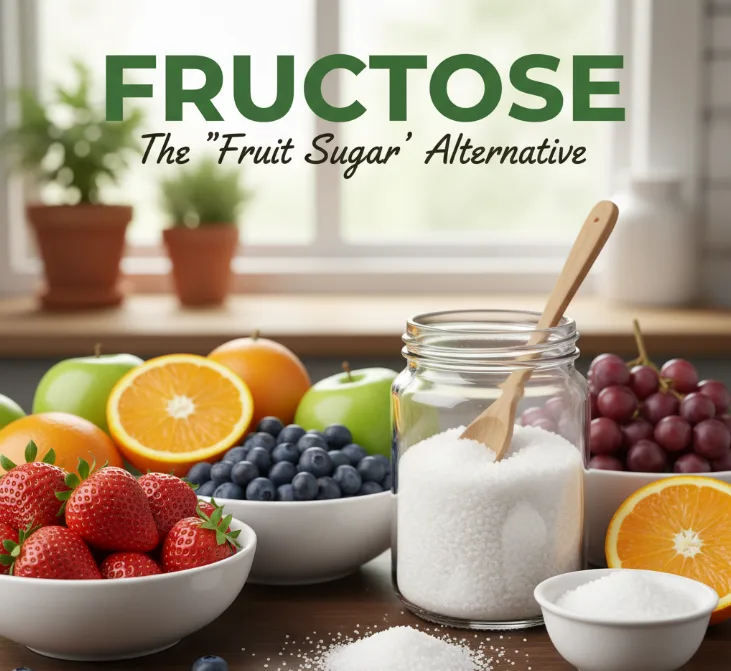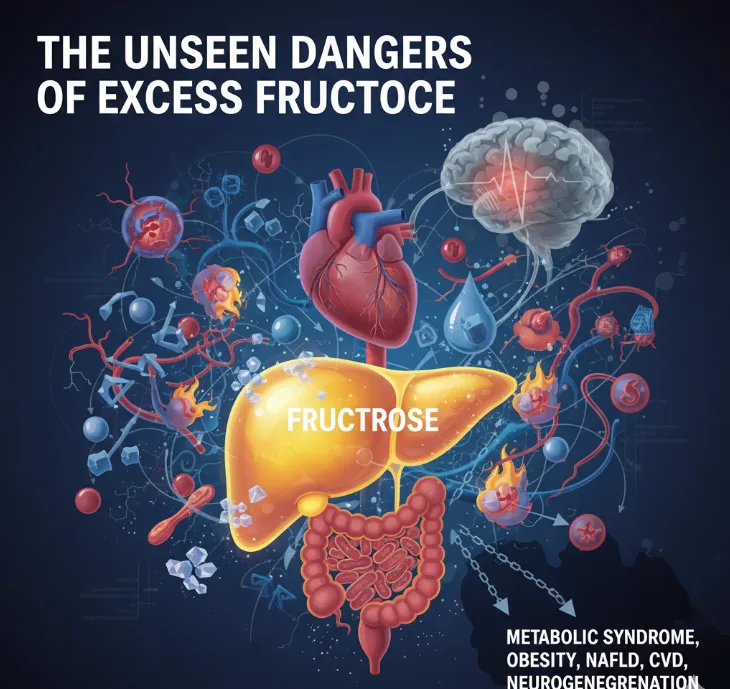Fructose vs. Glucose: The Sweet Truth About Sugar Substitutes
Many of us are on a perpetual quest for health, often starting with the common culprit: sugar. In our attempt to cut down or find a “healthier” alternative, we often encounter fructose, which is marketed as the next best thing. It’s easy to add to drinks, baked goods, and various dishes for a sweet kick. But the critical question remains: is fructose truly the superior, healthier option, or does regular sugar still hold its own in this nutritional debate? Let’s delve into the roles of both glucose and fructose in our diet and their ultimate impact on our health.
Understanding the Breakdown: Glucose and Fructose
When we consume regular table sugar, scientifically known as sucrose, it’s quickly absorbed into the bloodstream and broken down primarily into two components: glucose and fructose. Each of these sugars plays a distinct, essential role in the body.
Glucose is often called the body’s primary fuel. It is absolutely vital for the correct functioning of our brain, serving as its main energy source. Beyond mental function, glucose is instrumental in the body’s metabolic processes. A deficiency in glucose can have serious repercussions, negatively affecting the functioning of the nervous system, impairing mental abilities, and even dampening your immunity. For individuals under significant physical or mental stress, excluding sugar entirely from the daily diet might not be the wisest choice, as moderate consumption can provide the necessary energy boost.
In addition to its energy role, moderate sugar intake is even cited to help combat depression and certain nervous disorders—the classic “comfort food” effect. However, the line between moderate and excessive is thin and easily crossed. Going overboard with those feel-good snacks—muffins, cupcakes, and candies—can overwhelm the body. This overload forces the body to distribute the excess sugar throughout the cells, leading to normalized glucose levels only after the initial rush. This repeated cycle of excessive sugar intake is the primary driver of excess weight.
The dangers of uncontrolled sugar consumption are well-documented, with the worst health condition being the potential onset of diabetes. Furthermore, sugar has a distinctly negative effect on dental health, accelerating tooth decay. In many cases, reducing glucose intake is a sound health strategy. Yet, the appeal of sweets to cheer up or satisfy a craving often leads both adults and children to consume them uncontrollably.
Fructose: The “Fruit Sugar” Alternative
Given the negative aspects of excessive glucose, it seems logical to replace regular sugar with fructose, also known as “fruit sugar,” found naturally in almost all fruits, berries, and honey. At first glance, the switch seems like an easy “yes.” Fructose is appealing because it is sweeter than refined sugar, meaning you can achieve the same level of sweetness with a potentially smaller quantity. Unfortunately, the caloric value of fructose is practically the same as refined sugar, meaning the calorie count isn’t the primary differentiator.
The more significant issue with fructose lies in how the body processes it. Unlike glucose, fructose does not satiate our hunger. This lack of a fullness signal means we can easily consume far more fructose-sweetened products than necessary, which, just like excess table sugar, ultimately contributes to obesity.
On the plus side, fructose is generally considered to be less damaging to teeth compared to regular sugar. However, its metabolic pathway presents a different set of problems. Fructose is broken down very slowly and, critically, produces no insulin. Insulin is the key hormone that signals cells to absorb glucose from the bloodstream. Because fructose bypasses this system, a person can experience a sensation known as carbohydrate starvation, even after consuming a sweet. This feeling of low energy, paradoxically, can be solved by eating a small piece of chocolate (which contains glucose), but eating more fruits or berries (primarily fructose) will not help in this immediate context.
The Unseen Dangers of Excess Fructose
While moderate consumption of fructose from whole fruits is part of a healthy diet, using it as a primary sugar substitute poses considerable risks, particularly for otherwise healthy individuals.
The one group that can genuinely benefit from controlled fructose consumption are people with diabetes. Since fructose does not require insulin to be processed, it doesn’t cause the rapid spike in blood sugar that glucose does, making it a viable sweetener choice for managing their condition.
However, for a healthy body, high consumption of isolated fructose can be quite detrimental. It contributes to excess weight, just like regular sugar. More alarmingly, because it doesn’t trigger feelings of fullness, the body is encouraged to eat more. In large quantities, fructose has been linked to significant liver damage, various dysfunctional disorders, and the development of insulin resistance, a precursor to Type 2 diabetes. The liver is tasked with processing a large portion of ingested fructose, and an overload can strain its capacity, leading to the accumulation of fat in the liver.
The Final Verdict: Moderation is Key
In the ongoing debate between fructose and glucose, there is no definitive, universally “healthier” winner. Both have their unique benefits and drawbacks. Glucose is essential for energy and brain function, but excess leads to weight gain and diabetes risk. Fructose is naturally found in healthy foods and is better for diabetics, but in large, isolated quantities, it fails to satiate hunger and can cause serious liver and metabolic issues.
The core, non-scientific takeaway is simple and timeless: consume everything in moderation. Whether you’re reaching for a glucose-rich cookie or a fructose-sweetened drink, being mindful of your intake and balancing it with a healthy, active lifestyle is the only way to ensure you’ll be just fine.
What other common food myths about healthy eating do you want to explore?














